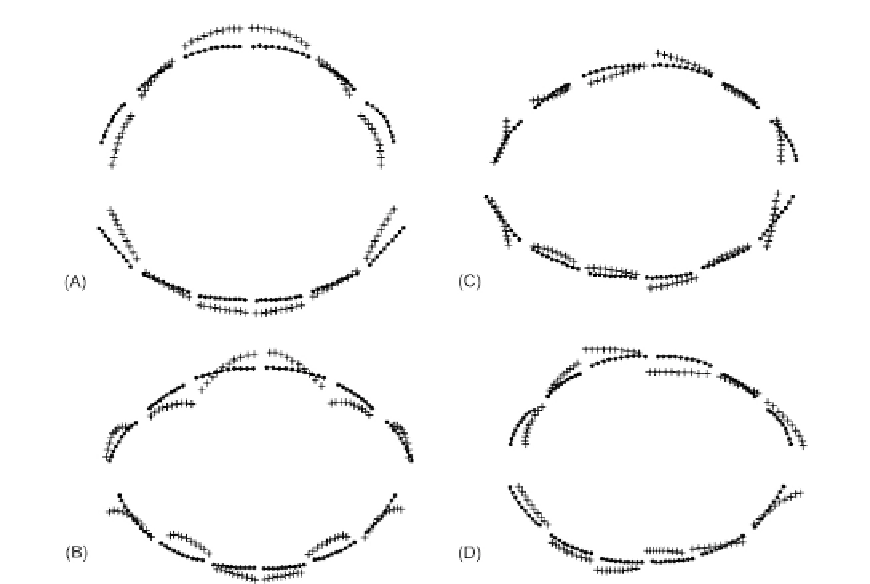Biology Reference
In-Depth Information
FIGURE 7.4
The first four SAs (A
D), showing patterns of covariation in the maxillary and mandibular denti-
tion (occlusal view with maxilla at top).
medial and superficial masseters, extend well into the tooth-bearing region. Nevertheless,
the two parts are commonly divided along the line shown in
Figure 7.5
, and are hypothe-
sized to be both developmental and functional modules.
The mandible is a single skeletal element and it is measured as a single configuration of
landmarks (and semilandmarks). To analyze its integration we can either retain the infor-
mation about the interconnections between the two parts within the whole, or we can treat
each module as a single configuration of its own and analyze the relationship between the
two configurations (
Klingenberg, 2009
). The major methodological distinction between the
two approaches is the first approach involves superimposing the entire configuration,
whereas the second involves superimposing each block separately. The major conceptual
distinction between the two approaches, as discussed by Klingenberg is that the first
explicitly considers information about the connection of the subsets, which is important
when some of the covariation between subsets arises from variation in their connections
rather than from simultaneous variation within the two subsets. The second approach
ignores the anatomical connection of the two subsets, including information about the rela-
tive sizes and positioning of the parts, focusing on the covariation due to joint changes of
shape within each subset.
In either case, our first objective is to measure the covariance between the two putative
modules. Because the hypothesis of modularity predicts that the two parts will not be


